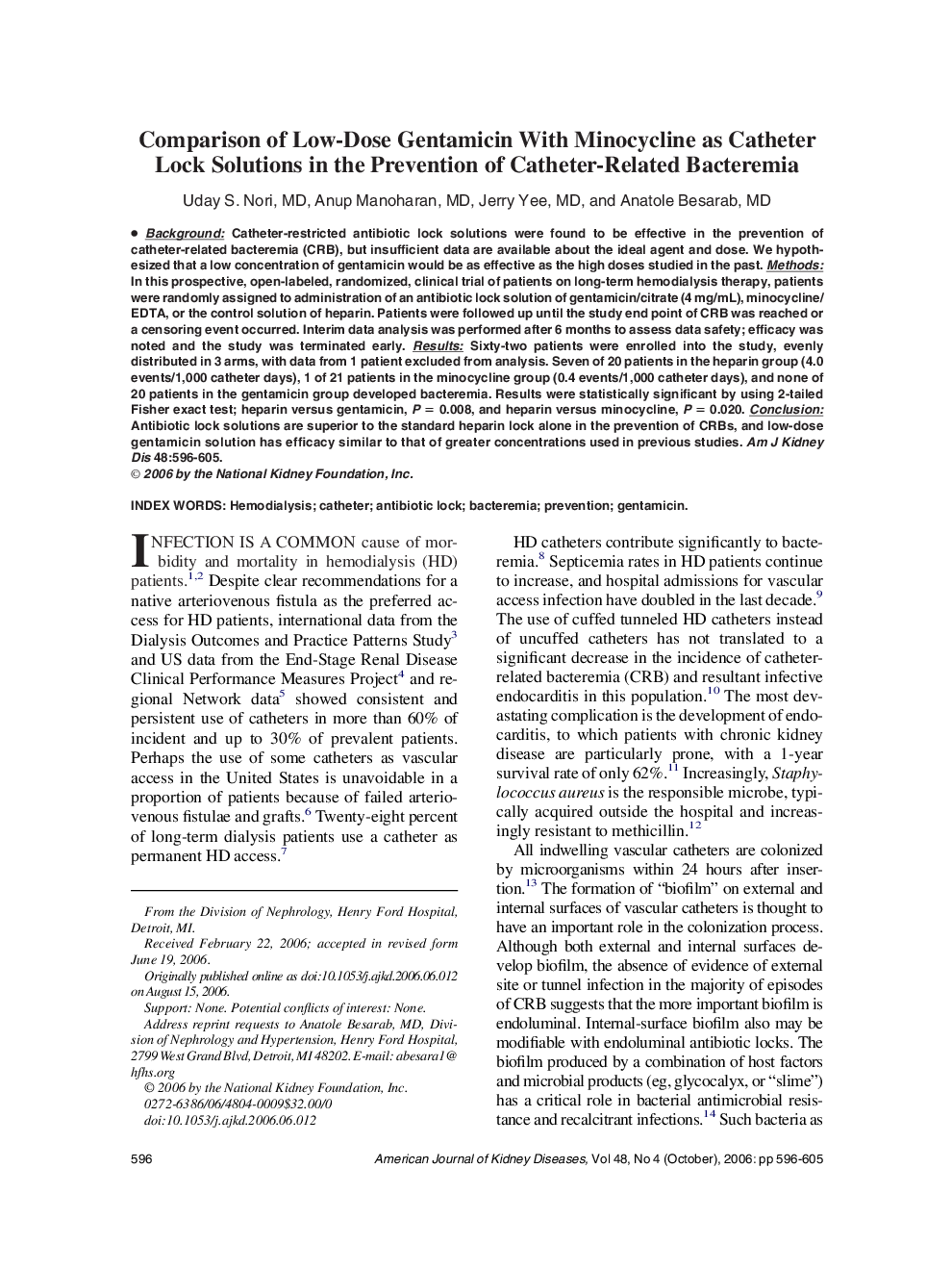| Article ID | Journal | Published Year | Pages | File Type |
|---|---|---|---|---|
| 3851689 | American Journal of Kidney Diseases | 2006 | 10 Pages |
Abstract
Background: Catheter-restricted antibiotic lock solutions were found to be effective in the prevention of catheter-related bacteremia (CRB), but insufficient data are available about the ideal agent and dose. We hypothesized that a low concentration of gentamicin would be as effective as the high doses studied in the past. Methods: In this prospective, open-labeled, randomized, clinical trial of patients on long-term hemodialysis therapy, patients were randomly assigned to administration of an antibiotic lock solution of gentamicin/citrate (4 mg/mL), minocycline/EDTA, or the control solution of heparin. Patients were followed up until the study end point of CRB was reached or a censoring event occurred. Interim data analysis was performed after 6 months to assess data safety; efficacy was noted and the study was terminated early. Results: Sixty-two patients were enrolled into the study, evenly distributed in 3 arms, with data from 1 patient excluded from analysis. Seven of 20 patients in the heparin group (4.0 events/1,000 catheter days), 1 of 21 patients in the minocycline group (0.4 events/1,000 catheter days), and none of 20 patients in the gentamicin group developed bacteremia. Results were statistically significant by using 2-tailed Fisher exact test; heparin versus gentamicin, P = 0.008, and heparin versus minocycline, P = 0.020. Conclusion: Antibiotic lock solutions are superior to the standard heparin lock alone in the prevention of CRBs, and low-dose gentamicin solution has efficacy similar to that of greater concentrations used in previous studies.
Related Topics
Health Sciences
Medicine and Dentistry
Nephrology
Authors
Uday S. MD, Anup MD, Jerry MD, Anatole MD,
